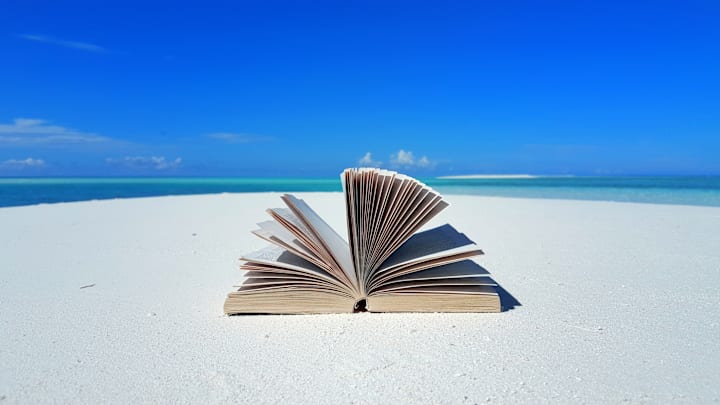For all intents and purposes, summertime came to America in the 1800s. Sure, there’d been summer before then, but many of the traditions we associate with the warm-weather months can be traced back to the 19th century, when industrialization and advances in transportation laid the groundwork for the summer vacation as we know it today. In the early 1800s, leisure travel was mostly reserved for wealthy families. But by the end of the 19th century, the summer vacation—often to a sunny, seaside resort town—was accessible to both well-off and working-class families, and with it came one of summer’s favorite fixtures: the beach read.
What Makes a Book a “Beach Read”?
Defining the “beach read” has always been a slippery prospect. The term is generally traced to the 1990s when it appeared in publishing trade journals before migrating to mainstream newspapers and magazines. Before that, books aimed at vacationers were identified as summer reading, a term that dates back to the mid-18th century and was already in wide use in America by 1897, when The New York Times published a diverse summer reading list with titles ranging from novels to biographies, stating that its only criteria for selection was “books that are now widely read and liked.”
A modern definition might be strikingly similar, as the term has been applied to such blockbuster novels as Gone Girl, Jaws, and whatever James Patterson most recently wrote. Barnes & Noble’s roundup of 2024 beach reads is filled almost entirely with breezy romances that have covers rendered in ice cream parlor colors; Harper’s Bazaar’s roundup is more diverse, adding thrillers, memoirs, and social histories to the mix. Some readers take a literal approach, assigning beach read status to books that channel a summer vibe and maybe don’t ask for a lot of mental heavy lifting. There’s also the matter of personal taste—to some, a beach read is a page-turning thriller. To others, it’s a low-stakes romantasy.
The Origins of the Beach Read
The first, wealthy vacationers indulged in summer reading, but according to media studies professor Donna Harrington-Lueker’s 2019 summer-reading history Books for Idle Hours, they weren’t expected to do anything so gauche as enjoy it. Those readers—who were assumed to be white and male—were encouraged to read political newspapers (in small doses), poetry, and essay collections. If they insisted on reading fiction, only the classics would do. One of the first books published and explicitly marketed to summer vacationers—1853’s Thalatta: A Book for the Sea-Side—was a collection of ocean-themed poetry from the likes of Tennyson and Longfellow.

By the 1870s, though, a confluence of circumstances paved the way for a publishing boom. The summer vacation had become democratized, literacy had increased, printing costs had declined, and publishers realized there were vast numbers of newly minted summer travelers who were open to more diverse forms of literature. The popularity of cheaply produced, inexpensive “dime novels” and fiction serialized in newspapers proved there was a reading public eager for literature that placed a premium on entertainment value. Summer was historically a slow time for the book industry, so publishers seized on this new market and began to promote books as “summer reading” and “summer books.”
There were, of course, objections. Novels were already viewed with squinty side-eye by many Victorian commentators, and this new wave of pop literature was greeted with disdain, to say the least. A well-known Brooklyn preacher referred to summer reading as “pestiferous trash” and warned vacationers against allowing “the frogs and the lice of a corrupt printing press crawl into [their] Saratoga trunk or White Mountain valise.” An article in an August 1879 edition of the Brooklyn Daily Eagle stated that “Cooper’s Leather Stocking Tales are far better mental food than the trash which goes under the title of ‘Summer reading.’”

But the beach novel persisted, and the publishing industry never really looked back. By 1898, beach books were aimed almost exclusively at female readers, and romance had become the dominant genre. The paperback publishing boom that began in the 1930s further cinched the notion that the beach read was as ephemeral as summer itself: lightweight, enjoyable, and perhaps easily left behind for the pleasure of future travelers.
Read More About Books:
